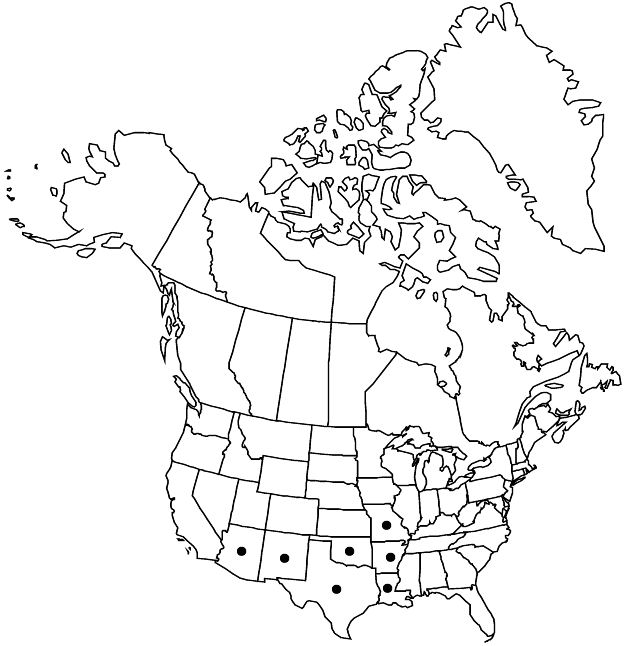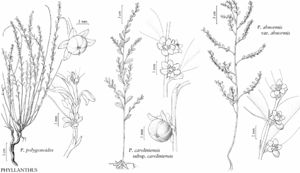Difference between revisions of "Phyllanthus polygonoides"
Syst. Veg. 3: 23. 1826.
FNA>Volume Importer |
imported>Volume Importer |
||
| (One intermediate revision by the same user not shown) | |||
| Line 51: | Line 51: | ||
|publication year=1826 | |publication year=1826 | ||
|special status=Illustrated | |special status=Illustrated | ||
| − | |source xml=https:// | + | |source xml=https://bitbucket.org/aafc-mbb/fna-data-curation/src/2e0870ddd59836b60bcf96646a41e87ea5a5943a/coarse_grained_fna_xml/V12/V12_346.xml |
|genus=Phyllanthus | |genus=Phyllanthus | ||
|species=Phyllanthus polygonoides | |species=Phyllanthus polygonoides | ||
Latest revision as of 19:14, 5 November 2020
Herbs, perennial, with woody caudex, usually monoecious, rarely dioecious, 1–5 dm; branching not phyllanthoid. Stems terete, not winged, glabrous. Leaves spiral, all well developed; stipules auriculate, pink or red to medium brown, with hyaline margins; blade narrowly oblong to obovate, 5–10 × 1.5–5 mm, base obtuse, apex acute to mucronulate, both surfaces glabrous or scabridulous. Inflorescences cymules or flowers solitary, unisexual or bisexual, with 1(–2) pistillate flowers and/or 1–3 staminate flowers. Pedicels: staminate 1.5–3.5 mm, pistillate spreading in fruit, 2.5–7 mm. Staminate flowers: sepals (5–)6, greenish yellow, sometimes suffused with red, with white margins, flat, 0.7–1.3 mm; nectary extrastaminal, 6 glands; stamens 3, filaments connate 2/3 length. Pistillate flowers: sepals (5–)6, green with white margins, flat, 1.5–2.5 mm, pinnately veined; nectary annular, 6-lobed. Capsules 2.7–3.2 mm diam., smooth. Seeds uniformly brown, (1.1–)1.2–1.4(–1.5) mm, irregularly verrucose. 2n = 16.
Phenology: Flowering and fruiting spring–fall.
Habitat: Grasslands, grass-shrublands, glades, especially calcareous soils.
Elevation: 700–2000 m.
Distribution

Ariz., Ark., La., Mo., N.Mex., Okla., Tex., n, c Mexico.
Discussion
Phyllanthus polygonoides is closely related to P. liebmannianus. Although in the flora area they are allopatric and easily distinguished by the characters used in the key, the differences other than habit are all quantitative, and where the species overlap in parts of northeastern Mexico they can be difficult to separate.
Selected References
None.
